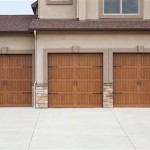Review of Workbench Ideas for Garages: Functionality, Design, and Optimization
The garage, often relegated to mere storage or vehicular housing, possesses untapped potential as a functional workspace. Central to transforming this space is the workbench, a dedicated area for pursuing DIY projects, repairs, and hobbies. A well-designed workbench can significantly enhance productivity, organization, and overall enjoyment of garage-based activities. This article explores a variety of workbench ideas for garages, analyzing their strengths, weaknesses, and suitability for different needs and skill levels. The goal is to provide a comprehensive overview to assist individuals in selecting or designing the optimal workbench solution for their specific requirements.
The selection of a garage workbench necessitates careful consideration of several key factors. These include the available space, the types of projects anticipated, the budget, and the desired level of portability and storage. A cramped garage demands a space-saving design, while extensive projects may necessitate a larger, more robust structure. Prefabricated workbenches offer convenience and affordability, while custom-built solutions allow for tailored specifications. Ultimately, the ideal workbench represents a balance between these competing factors, aligning functionality with practicality.
Key Point 1: Evaluating Workbench Materials and Construction
The materials and construction methods employed in a workbench directly impact its durability, stability, and overall lifespan. Common workbench materials include wood, metal, and composite materials, each possessing distinct advantages and disadvantages. Wood, particularly hardwood such as maple or oak, offers excellent strength and is relatively easy to work with. However, wood is susceptible to moisture damage and may require periodic sealing or finishing. Metal workbenches, typically constructed from steel, provide superior strength and resistance to wear and tear. Metal is generally more expensive than wood and may require specialized welding or fabrication skills.
Composite materials, such as laminated particleboard or MDF (Medium-Density Fiberboard), offer a cost-effective alternative to solid wood. These materials are relatively lightweight and provide a smooth, consistent work surface. However, composite materials are generally less durable than solid wood or metal and may be more prone to damage from moisture or heavy loads. The choice of material depends largely on the intended use of the workbench and the desired level of longevity.
Beyond material selection, the construction methods employed are equally critical. A well-constructed workbench will feature sturdy joints, reinforced supports, and a stable base. Joints should be securely fastened using screws, bolts, or adhesives, depending on the material. Adequate bracing and support structures are essential to prevent sagging or warping under heavy loads. A level and stable base is crucial for ensuring accurate and safe work. Workbenches designed for heavy-duty applications should incorporate features such as welded frames or reinforced legs.
The surface of the workbench also warrants careful consideration. A smooth, flat surface is essential for accurate measurements and precise work. Many workbenches feature a sacrificial top, which can be replaced when damaged or worn. Common sacrificial top materials include hardboard, tempered masonite, or butcher block. The surface may also be coated with a sealant or finish to protect against spills and scratches. The type of finish should be appropriate for the intended use of the workbench and should resist chemicals or solvents that may be encountered during projects.
Key Point 2: Analyzing Different Workbench Styles and Designs
Workbench designs are highly diverse, ranging from simple, freestanding units to complex, integrated systems. The optimal design depends on the available space, the types of projects to be undertaken, and the desired level of organization. One common design is the freestanding workbench, which consists of a tabletop supported by legs or a frame. Freestanding workbenches are relatively easy to construct and can be moved or repositioned as needed. However, they may offer limited storage and may not be as stable as other designs.
A popular alternative is the wall-mounted workbench, which is attached directly to the garage wall. Wall-mounted workbenches save floor space and can be folded away when not in use. These designs are particularly suitable for small garages or workshops where space is at a premium. However, wall-mounted workbenches may have a limited weight capacity and may require additional support structures depending on the wall construction.
Integrated workbench systems offer a comprehensive solution for organization and storage. These systems typically include a workbench top, drawers, cabinets, and shelving. Integrated systems provide ample storage for tools, materials, and accessories, and can be customized to meet specific needs. However, integrated systems are generally more expensive than freestanding or wall-mounted workbenches and may require more assembly time.
Portable workbenches offer a compromise between functionality and mobility. These workbenches are typically lightweight and feature folding legs or wheels for easy transport. Portable workbenches are ideal for individuals who need to work in multiple locations or who have limited storage space. However, portable workbenches may have a limited weight capacity and may not be as stable as stationary workbenches.
Consider also the inclusion of specialized features such as vises, jigs, and tool holders. A vise is an essential tool for securely holding workpieces during cutting, shaping, or assembly. Jigs can be used to create repetitive cuts or shapes with precision. Tool holders can help to organize tools and keep them readily accessible. The inclusion of these features can significantly enhance the functionality and efficiency of the workbench.
Key Point 3: Optimizing Workbench Storage and Organization
Effective storage and organization are critical for maximizing the utility of a garage workbench. A cluttered and disorganized workspace can lead to frustration, wasted time, and even accidents. A well-organized workbench allows for easy access to tools and materials, promoting efficiency and productivity. There are numerous strategies for optimizing workbench storage and organization, ranging from simple shelving to complex drawer systems.
Shelving is a versatile and affordable storage solution for workbenches. Shelves can be used to store a wide variety of items, including tools, materials, and supplies. Shelves can be mounted above the workbench, below the workbench, or on adjacent walls. Adjustable shelves offer flexibility in accommodating items of different sizes.
Drawers provide a secure and organized storage solution for smaller tools and accessories. Drawers protect items from dust and damage and can be labeled for easy identification. Drawer dividers can be used to further organize items within drawers. The number and size of drawers should be tailored to the specific needs of the user.
Cabinets offer a more secure and enclosed storage solution for valuables or hazardous materials. Cabinets can be used to store power tools, chemicals, or flammable liquids. Cabinets should be equipped with locks to prevent unauthorized access. The size and configuration of cabinets should be determined by the items to be stored.
Pegboards are a popular and affordable solution for organizing hand tools. Pegboards feature a series of holes that can be used to hang tools using hooks or hangers. Pegboards can be mounted on the wall above the workbench or on the sides of cabinets. Pegboards allow for easy access to tools and help to keep the workbench surface clear.
Other organizational tools include magnetic tool strips, which can be used to hold metal tools such as screwdrivers and wrenches. Jars and containers can be used to store small parts such as screws, nails, and washers. Labeling systems can be used to identify the contents of drawers, cabinets, and containers. The implementation of a comprehensive organizational system can significantly enhance the functionality and efficiency of the garage workbench.
In addition to physical storage solutions, consider implementing a system for managing inventory and tracking supplies. This can involve creating a spreadsheet or database to track the quantity and location of various items. Regularly reviewing inventory and disposing of unwanted or unused items can help to prevent clutter and maintain an organized workspace. By prioritizing storage and organization, individuals can create a more efficient and enjoyable garage workspace.
Lighting is often an overlooked aspect of workbench design. Adequate lighting is essential for safe and accurate work. Consider installing overhead lighting to illuminate the entire workbench area. Task lighting, such as a gooseneck lamp or LED strip, can provide focused illumination for specific tasks. Proper lighting can reduce eye strain and improve visibility, leading to increased productivity and reduced errors.
The selection and implementation of garage workbench ideas should be approached with careful consideration of the intended use, available space, and budget. By carefully evaluating materials, designs, and organizational strategies, individuals can create a functional and efficient workspace that meets their specific needs and enhances their enjoyment of garage-based activities. The time invested in planning and executing a well-designed workbench will yield long-term benefits in terms of productivity, organization, and overall satisfaction.
:max_bytes(150000):strip_icc()/acraftedpassion-f5f83d6e6d85470c933cb2ae97ac4ac7.jpg?strip=all)
15 Garage Workbench Ideas To Make The Most Of Your Workspace
:max_bytes(150000):strip_icc()/honeybearlane-6cefa24a6caa4dfab4599d652f3609b1.jpg?strip=all)
15 Garage Workbench Ideas To Make The Most Of Your Workspace

11 Diy Workbench Ideas For Your Garage Or Office Simplified Building

Build A Basic Workbench Tylynn M

The Finest Garage Workbenches 2024 Reviews By Woodsmith

The Finest Garage Workbenches 2024 Reviews By Woodsmith
:max_bytes(150000):strip_icc()/artisanmadeshop-06bfa546f67e43e5b04f3a342063dbda.jpg?strip=all)
15 Garage Workbench Ideas To Make The Most Of Your Workspace

The Garage Work Of Your Dreams Ideas

Diy Mobile Workbench Compact Woodworking Station Miter Saw Table Planer Small Garage
:max_bytes(150000):strip_icc()/bitterrootdiy-b15440e5676e484dbe9ad7a0982bc5a6.jpg?strip=all)
15 Garage Workbench Ideas To Make The Most Of Your Workspace
Related Posts








